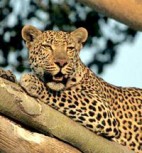 The population of one of the big cats of Pakistan and Azad Kashmir, the leopard, is dwindling rapidly and regardless of strict conservation efforts, leopard poaching is still a productive industry.
The population of one of the big cats of Pakistan and Azad Kashmir, the leopard, is dwindling rapidly and regardless of strict conservation efforts, leopard poaching is still a productive industry.
Earlier this year for example, spanking new leopard skins curved up in both Lahore and Rawalpindi where exceedingly stupid people are prepared to pay as much as two hundred thousand rupees for such a treasure. Leopard remains find a ready market too as they are used by some hakims here and also smuggled out of the nation for use abroad.
It is hard to make an approximation of the number of leopards remaining in the country but their number is relatively small. In recent years, killing leopards and selling off their skins and body parts is increasingly becoming eye-catching to unprincipled people in search of that easy money.
Panthera pardi are still found in little numbers in the Murree Hills, especially in Ayubia National Park, Margalla National Park outside Islamabad, Kohistan, Waziristan, Balochistan and Azad Kashmir and aside from Panthera pardi there used to be four sub-species too, but whether or not these all still exist is anyones speculation.
Mountain leopards breed on one occasion a year either in late spring or summer and the female usually has only two cubs which, these days and if at all potential, are promptly killed by local people who have no considerate of the importance of wildlife. If not the situation changes for the better and unless leopards and community can be trained to coexist as they once did, the
future of our aboriginal leopard inhabitants is at very soaring risk indeed.
Mountain leopards are bigger than those inhabiting desert topography and other lowland areas and the mountain residential leopard, Panthera pardi, is the species most people picture when the word leopard draw closer to mind. These, if they are males, may stand 66cm at the shoulder, compute up to 117cm in body length with an added 71cm to 96cm added on by the tail.
A leopard much loved prey is small animals, monkeys, birds and even snakes and lizards, but as humans encroach more and more into traditional leopard areas, badly affecting ecosystems and natural balance in the process, then hungry leopards have begun killing goats and the like and this, plus the clear danger factor to humans, does not make them at all popular with locals stressed to make a living in leopard territory.
Leopards are usually shy and introverted animals and much prefer to hunt by nighttime although, in recent years, their habits have turned out to be more unpredictable due to increased human interruption in their territory and, regrettably, leopards have killed people, along with livestock, during daylight hours in the Nathia Gali area and leopard attacks have reportedly increased in Azad Kashmir too.